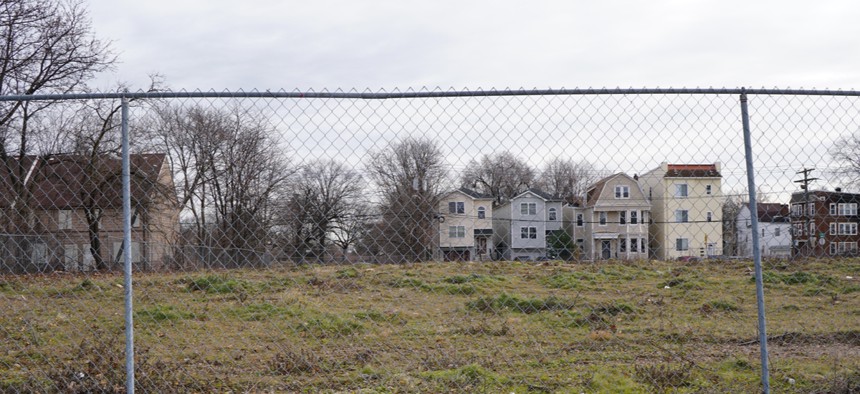A New Look at Where Gentrification Is Happening

The study found that 69% of neighborhoods that experienced gentrification in the past few years were either in or adjacent to an Opportunity Zone. Shutterstock

Connecting state and local government leaders
Cities in California dominated a gentrification ranking, but several smaller metropolitan areas also appeared.
As thousands of people move houses and apartments during the pandemic in search of places with more space and lower costs of living, it has raised new questions about whether this sudden onslaught of panic moving could eventually increase the rate of gentrification in vulnerable neighborhoods.
This is a particular concern in cities where large swaths of low- and middle-income neighborhoods have already been heavily gentrified, with low-income people, often Black and Latino, pushed out of their long time homes as newer, richer residents move in. A new report from the National Community Reinvestment Coalition identifies cities the group determined experienced the most intense gentrification over a five-year period ending in 2017. The researchers note that “Covid-19 exposed deep economic and social fault lines nationwide” and called on city leaders to consider how to foster investment that helps existing communities of color and low-income neighborhoods instead of displacing them.
The study made its gentrification conclusions by analyzing 9,743 neighborhoods in the bottom 40th percentile of income and property values. Of those, researchers found 954 tracts did gentrify as income and property values increased, along with college degree attainment. Cities with the largest share of their neighborhoods experiencing gentrification ranked near the top.
Overall, the report concluded that gentrification was concentrated in select “boomtowns,” while the vast majority of other cities struggled to attract investment to neglected areas. The location with the most gentrified neighborhoods was the San Francisco Bay Area, including not just San Francisco but also the neighboring city of Oakland. The cities that followed included Denver, Boston, Miami, and New Orleans.
Washington, D.C., which ranked first in last year’s report that evaluated cities from 2000 to 2012, dropped to number 13. The report noted that this doesn’t reflect that changes in Washington have stopped, but that gentrification “surged elsewhere.” The report notes that “during the past five years more cities experienced at least some level of neighborhood gentrification than in the prior period.”
Smaller urban areas that made the top 20 include Indianapolis, Phoenix, and Minneapolis.
In addition to San Francisco, four other cities from California also made the top twenty, including San Jose, Sacramento, San Diego, and Los Angeles. Gentrification has been a frequent focus of elected officials in California, where leaders are attempting to balance the pressing need to construct new affordable housing options with concerns that new construction could further gentrification in certain communities.
“Many of our lowest-income residents understandably worry about being pushed out of their own communities because of gentrification,” Gov. Gavin Newsom said in his State of the State address in February. “These real concerns should not be brushed aside.”
Though some of the cities on the list, including San Francisco, may have gentrified due to rapid population and economic growth, Jason Richardson, NCRC director of research and evaluation, said the bigger concern in struggling neighborhoods in most cities across the country is simply neglect. “Some cities were booming, and that created unique and difficult challenges for longtime residents who were priced out and pushed out,” Richardson said in a statement. “But in most of the country, lower-income residents and neighborhoods suffered from a lack of investment, stagnant economies and fewer opportunities to accumulate personal wealth.”
To investigate places that suffered from a lack of investment, the study also looked at the “Opportunity Zones” created by the 2017 Republican tax package, which were supposed to incentivize investors to build in economically distressed communities. Opportunity Zones have been controversial since their creation, with proponents arguing that the program will draw industries into low-income neighborhoods, while opponents questioned if they would merely act as “mini tax havens for the rich” or only benefit neighborhoods already primed for gentrification.
Researchers found that the Opportunity Zones mostly do exist in distressed neighborhoods that haven’t experienced investment—and need it. But the report also found that in cities with significant gentrification, many zones are located in or near gentrified areas, raising concerns that in those neighborhoods the program could actually exacerbate displacement of residents.
But while it is too soon to tell what impact Opportunity Zone investment will have on gentrification, researchers cautioned that city leaders will have to think carefully about where to invest dollars during the recovery from the coronavirus pandemic that has disproportionately affected minority neighborhoods.
“Chronic disinvestment in lower-income communities will undoubtedly be exacerbated by the Covid-19 crisis,” the authors wrote. “The data underscores the need for a more equitable system and policies that help more communities attract investment without displacing the families that live there.”
Emma Coleman is the assistant editor for Route Fifty.

NEXT STORY: Goodbye, Confederate Statues. Hello, Dolly Parton and Chef Boyardee?





